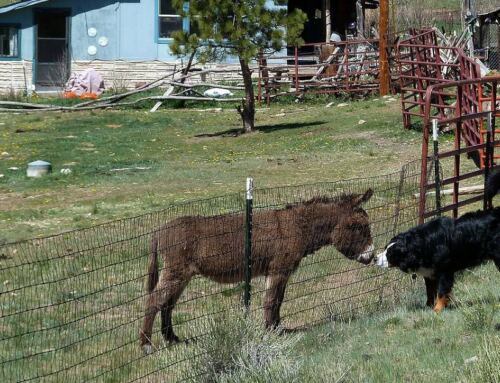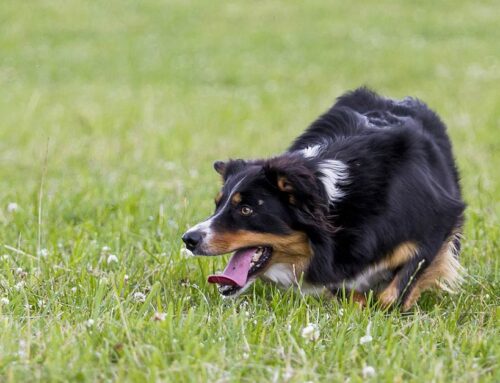One of the reasons I go on like a broken record about the importance of using reward based training methods that have been designed based on the evidence available garnered through the study of animal behavior and research is because working with fearful dogs can be so darn challenging. So challenging that if you don’t start seeing improvements soon you might become frustrated and disillusioned and the dog’s behavior can continue to degrade.
It’s the same reason I repeatedly remind people about behavioral medications that can help the process of changing how a dog feels about things that scare them. The risks of putting a dog on an approved behavioral medication for a few months, following the protocol recommended by a veterinarian, may be fewer than the risks we take by continuing to expose a dog to triggers without them. We can add more fears to a dog’s list of triggers, or further sensitize them to the ones they already have. It’s something to think about.
The gold standard for working with fear based behaviors in dogs is to use a combination of desensitization and counter conditioning. These are easy enough to understand, but not always easy to implement successfully. When a dog’s behavior does not improve, though the handler is employing these techniques, there are some common “fails” that may be occurring.
One common fail is to expose the dog to what scares them at a level that overwhelms them. It could be that the scary object or event is too close, too big, too many, too loud or around too long. Being able to eat treats is not a guarantee that a dog is what we commonly refer to as under threshold. It is possible for a dog to be motivated enough by something, to tolerate something scary or unpleasant to them in order to get it. It’s why it’s not recommended that a dog who is afraid of people be invited to take treats from a stranger. The same way you might be willing to pick up a paycheck every week and still hate your job, a dog may be willing to snatch a treat from someone and still wish they weren’t there. This does not mean that we can’t help a dog who is routinely over threshold, sometimes we have no choice, but until you have a good relationship with a dog and have given them coping skills it’s best to strive for less bothered rather than more.
Another fail is to assume that you are actually counter conditioning a dog to what it is they are afraid of. Our understanding of classical conditioning is based on the work of Pavlov, the man who turned getting dogs to drool into an art form. Classical conditioning is learning by association. We all do it, all the time. Counter conditioning is changing an already established classically conditioned response. A dog who is afraid of ________ learns to love children, loud noises, other dogs, car rides, vacuums, getting their ears cleaned, men with hats, etc. The scary thing which once predicted being scared now predicts cheese or a frisbee toss. It can take countless repetitions for some dogs to get this new association to replace the old one. A handler may be feeding steak in the presence of a trigger for years and not make this switch. The problem may be that the trigger is not what is predicting the treat for the dog.
Life is not always orderly. What can seem obvious to us is not to our dogs. If there is something that is relevant to us we often assume it is relevant to others, and it is not. There can be things and events in the environment that take precedence over another for a dog’s attention. We may be assuming that because we noticed the trigger and fed our dog treats, that the dog will make the association that it was the appearance of the trigger that made the treats appear. This isn’t always the case. Even if the dog notices the trigger it might not be the event in the environment that the dog is learning makes treats appear. If this goes on long enough, you reaching for a treat when a kid on a skate board goes by, the dog may eventually learn to feel ok about the skateboarding kid, but not as quickly as he would if it was the kid on the skate board that predicted the treat, and not your hand movement or that you stopped and turned in a particular direction.
Another common fail is that whatever is being used to counter condition is simply not good enough. Many dogs will eat anything, any time. I have no trouble motivating my dogs for a training session using treats, after they’ve had a meal. This is not true of all dogs, but by my dogs’ reactions to seeing me gather up training paraphernalia; clicker, treats, target stick, toys, bait bag, you’d think they’d never had a square meal in their lives. One of the reasons for this is that it’s not just the food that they enjoy. Figuring stuff out is fun for dogs too. But when you are working with a dog who is really afraid of something whatever you are offering them to create a positive association, needs to be amazin. Sometimes this is tough, and is why we combine counter conditioning with desensitization, to tip the scales in our favor. Suffice to say if someone wanted me to feel good about seeing Rush Limbaugh walk into a room they’d have to take out a loan. It’s not always easy to change how a dog feels about something or someone.
As the dog’s emotional responses change we can increase the level of their exposure to a trigger and we may find that what used to require filet mignon to get a tail wag only requires a smile and word of praise from us to get a positive response from our dog. If what you are doing isn’t working, it’s not that the process of desensitization and counter conditioning doesn’t work, it’s that your technique may need some work.






